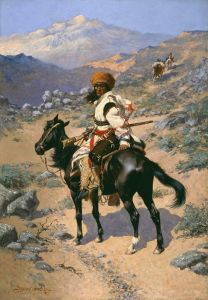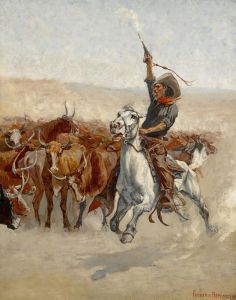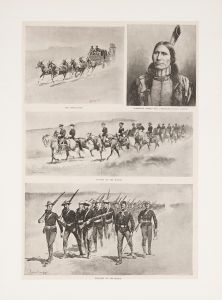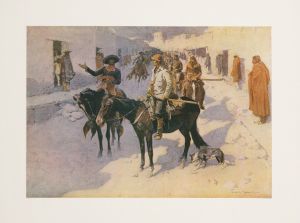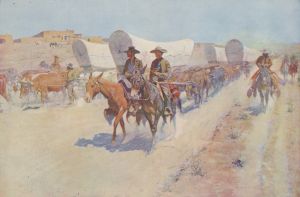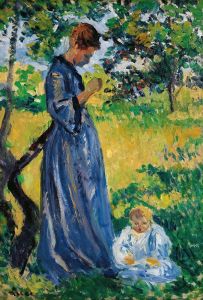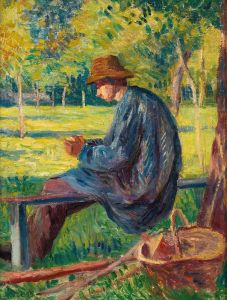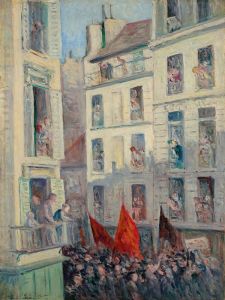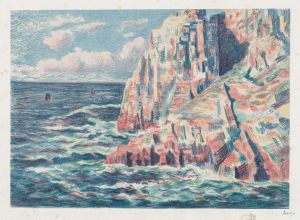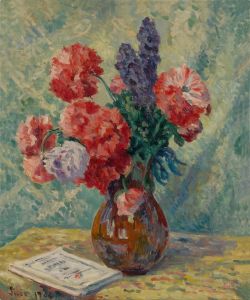
Buffalo Bill, le lasso
A hand-painted replica of Maximilien Luce’s masterpiece Buffalo Bill, le lasso, meticulously crafted by professional artists to capture the true essence of the original. Each piece is created with museum-quality canvas and rare mineral pigments, carefully painted by experienced artists with delicate brushstrokes and rich, layered colors to perfectly recreate the texture of the original artwork. Unlike machine-printed reproductions, this hand-painted version brings the painting to life, infused with the artist’s emotions and skill in every stroke. Whether for personal collection or home decoration, it instantly elevates the artistic atmosphere of any space.
Maximilien Luce was a French Neo-Impressionist artist known for his paintings, illustrations, and engravings. He was associated with the Pointillist movement, which was characterized by the use of small, distinct dots of color applied in patterns to form an image. Luce's work often depicted scenes of everyday life, landscapes, and urban environments, capturing the vibrancy and dynamism of the late 19th and early 20th centuries.
"Buffalo Bill, le lasso" is one of Luce's paintings that reflects his interest in contemporary events and figures. The painting features the iconic American showman Buffalo Bill, whose real name was William Frederick Cody. Buffalo Bill was famous for his Wild West shows, which toured extensively in the United States and Europe during the late 19th and early 20th centuries. These shows were theatrical extravaganzas that depicted scenes from the American frontier, including cowboy and Native American culture, sharpshooting, and other elements of the Wild West.
Luce's depiction of Buffalo Bill captures the essence of the showman's larger-than-life persona and the spectacle of his performances. The painting likely portrays a moment from one of Buffalo Bill's shows, emphasizing the action and excitement associated with his lassoing skills. The use of vibrant colors and dynamic composition in the painting aligns with Luce's Neo-Impressionist style, which sought to convey movement and emotion through color and form.
Buffalo Bill's Wild West shows were immensely popular in Europe, and their influence extended beyond entertainment, shaping perceptions of the American West. Luce's choice to paint Buffalo Bill reflects the widespread fascination with the Wild West and its cultural impact during this period. The painting serves as a historical document, capturing the intersection of American and European cultures at a time when such exchanges were becoming increasingly common.
Maximilien Luce's work, including "Buffalo Bill, le lasso," is significant not only for its artistic merit but also for its reflection of the social and cultural dynamics of the time. Luce was deeply engaged with the world around him, and his art often commented on contemporary issues and events. His portrayal of Buffalo Bill is a testament to the global reach of American popular culture and the enduring allure of the Wild West mythos.
In summary, "Buffalo Bill, le lasso" by Maximilien Luce is a painting that captures the excitement and spectacle of Buffalo Bill's Wild West shows. Through his Neo-Impressionist style, Luce brings to life the dynamic energy of the performance, while also highlighting the cultural exchange between America and Europe during the late 19th and early 20th centuries. The painting stands as a vibrant example of Luce's ability to blend artistic innovation with historical narrative, offering viewers a glimpse into a unique moment in cultural history.






